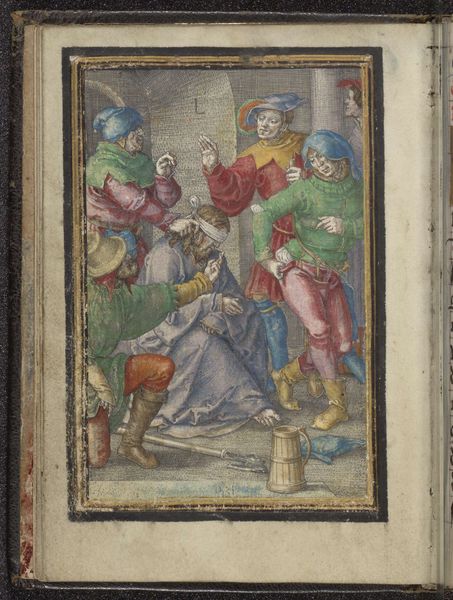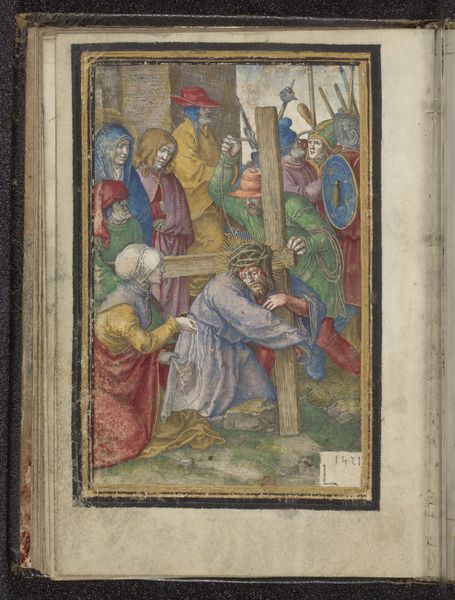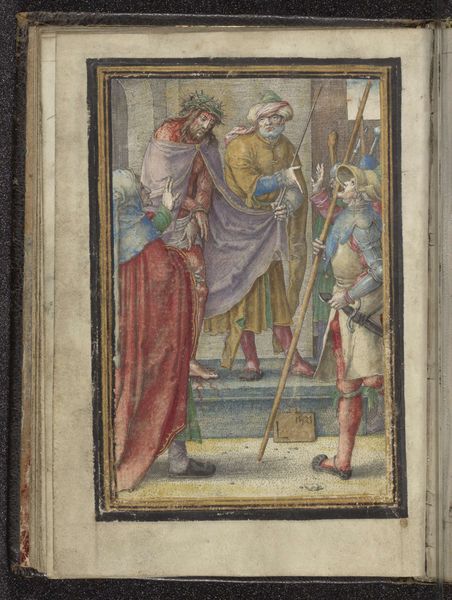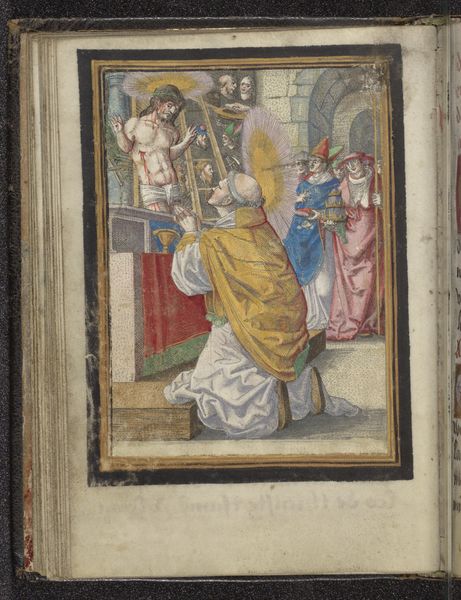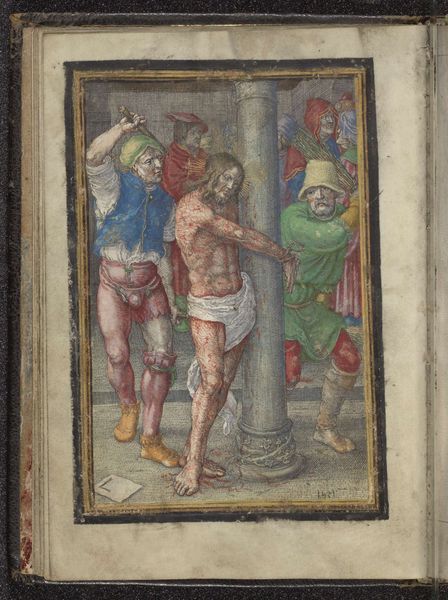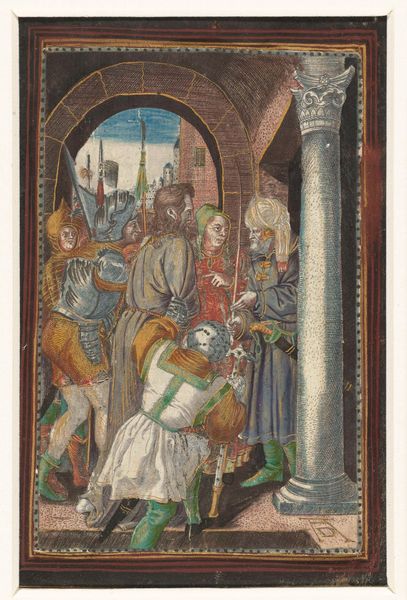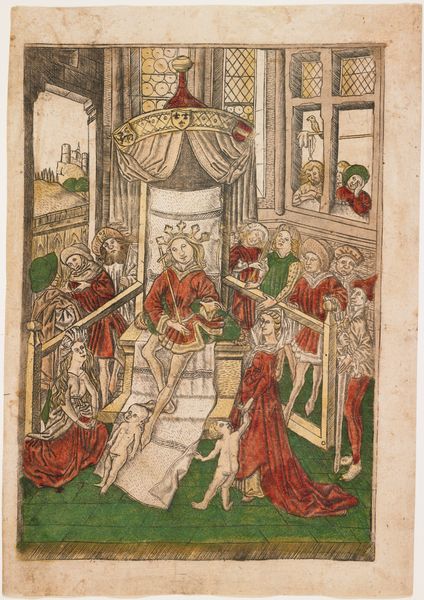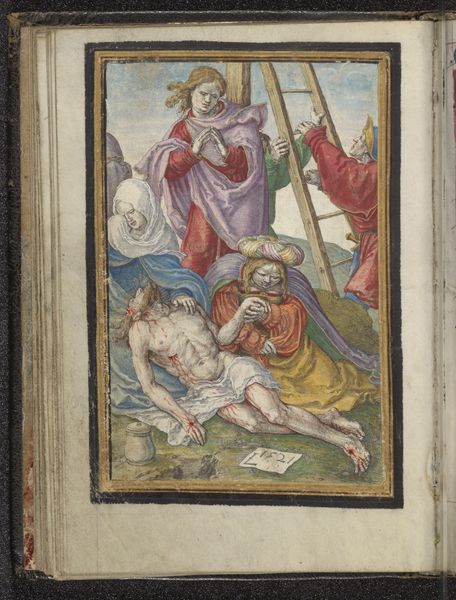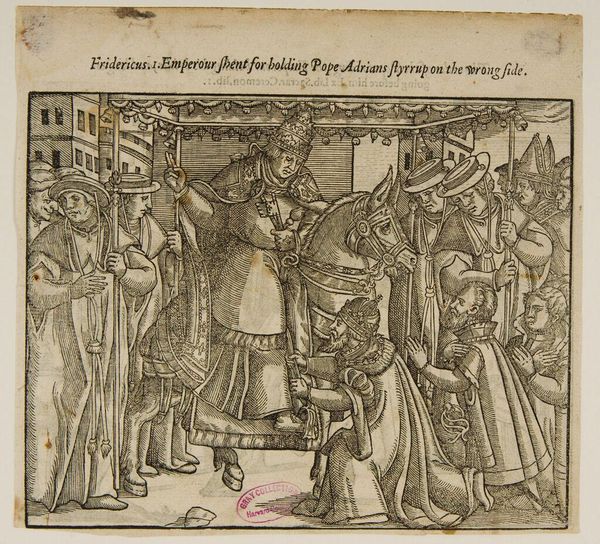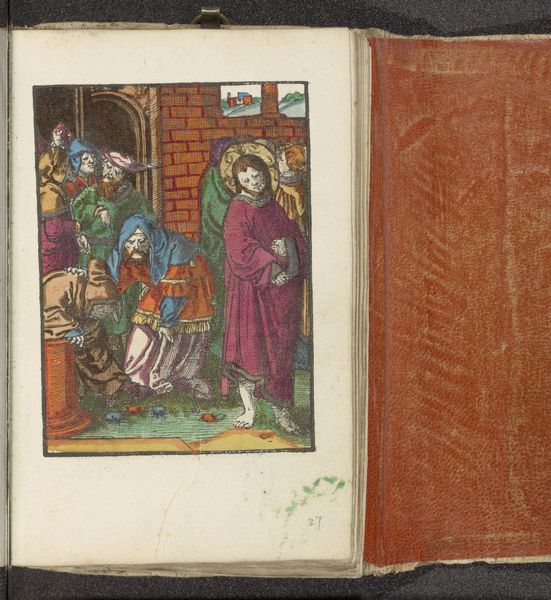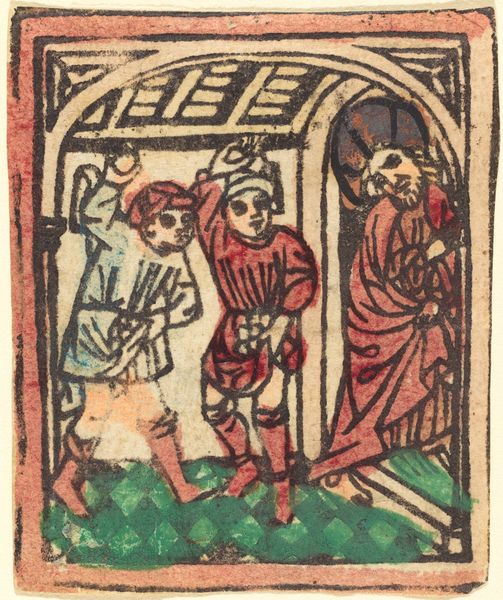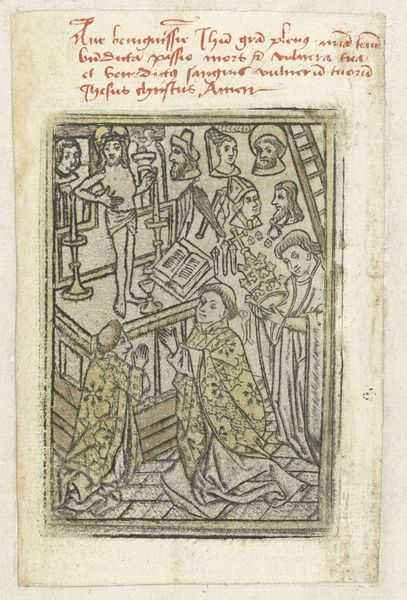
drawing, tempera, pen
#
drawing
#
tempera
#
figuration
#
coloured pencil
#
pen
#
history-painting
#
northern-renaissance
Dimensions: height 149 mm, width 105 mm
Copyright: Rijks Museum: Open Domain
Lucas van Leyden created this engraving of the "Crowning with Thorns" without a date. Observe the crown itself, a twisted wreath of thorns. The motif of a thorny crown pressed upon Christ's head is heavy with symbolic meaning; it is a symbol of mockery and suffering. Its appearance here in the early 16th century evokes the tradition of antiquity, where wreaths symbolized victory and authority. Yet, by placing this symbol on Christ during his Passion, van Leyden transforms it into an emblem of unjust suffering, evoking a complex interplay between humiliation and the symbolic assertion of spiritual sovereignty. Across centuries, the image of the crown resurfaces, evolving into varied forms. Think of Caravaggio’s emotive intensity, or the Byzantine mosaics that elevate it to a symbol of divine ordeal. The repeated return of the crown in Western art illustrates a collective memory; an effort to reconcile themes of power, suffering, and redemption, revealing how symbols transcend time, bearing witness to humanity's enduring spiritual and psychological struggles.
Comments
No comments
Be the first to comment and join the conversation on the ultimate creative platform.
